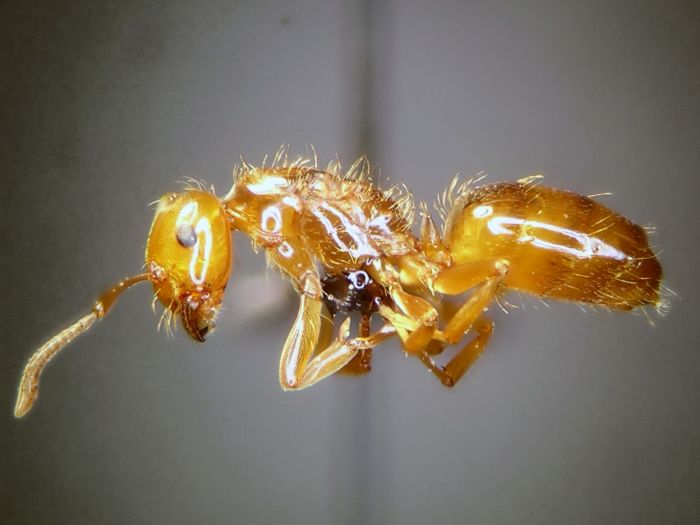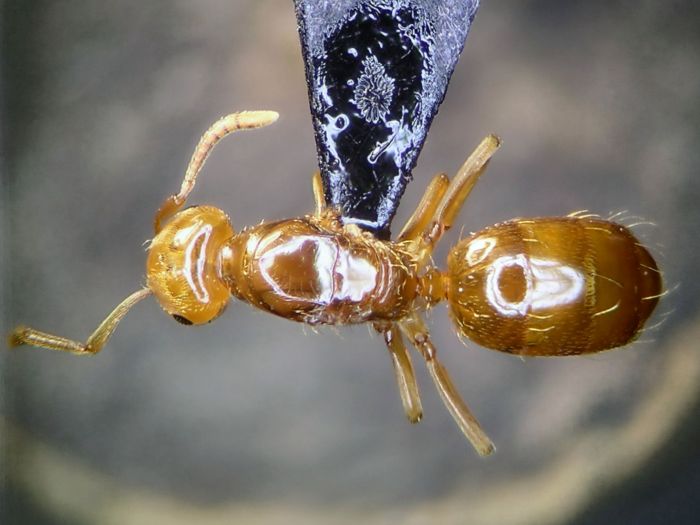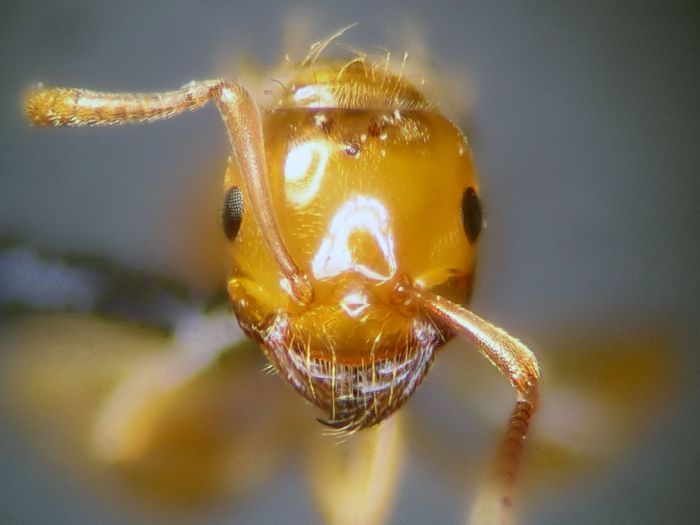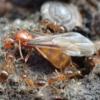1. Location of collection: Ice House Canyon, Mt. Baldy, California.
2. Date of collection: 8-27-2014.
3. Habitat of collection: Pine/Oak Forest.
4. Length (from head to gaster): 5 mm.
5. Color, hue, pattern and texture: All yellowish-brown, with a redish-brown thorax.
6. Distinguishing characteristics: Parasitic look with small gaster.
7. Anything else distinctive:
8. Nest description:




























